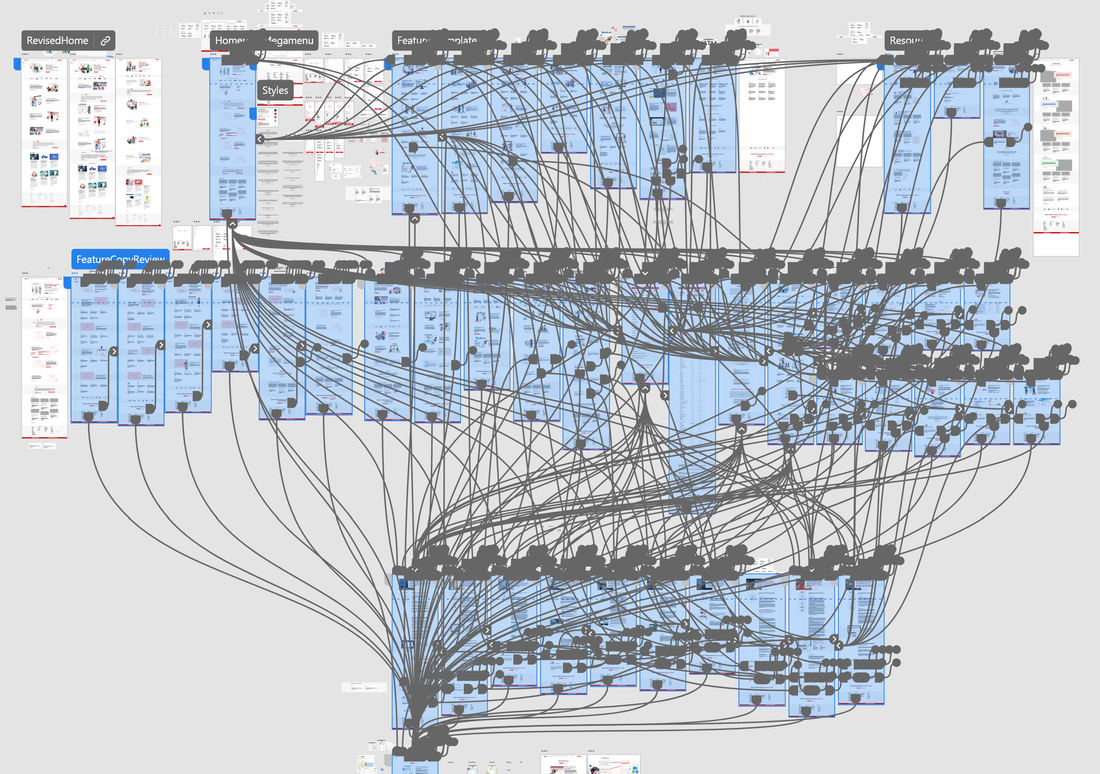Website design
I designed, led, built, and managed Bullseye Location's new website.
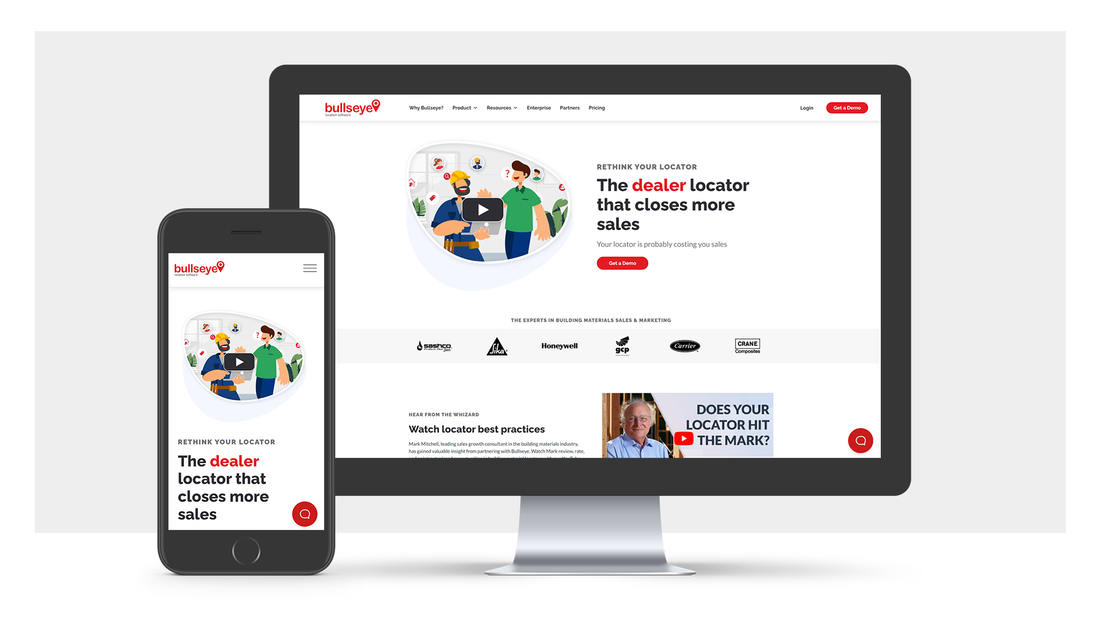
The Problem: Communicate Bullseye's benefits and product offerings clearly to the building materials audience.
Bullseye offers a cloud-based store locator software service. After 20 years, Bullseye has added a full suite of advanced features that take it far beyond a traditional store locator, including features like:
All of these features put Bullseye on a different level than other store locators, but the website did not communicate this clearly. Bullseye is also priced significantly higher than other solutions, starting at $225/month while basic store locators can charge as little as $15/month.
We decided to focus on targeting the building materials industry. These companies often sell through service providers like contractors and installers and through brick and mortar retailers like dealers and distributors. The price points can be quite high, so end customers spend a lot more time on their purchase decision. They also require more information than a simple dealer or contractor address. Bullseye is perfect to meet their needs.
Bullseye offers a cloud-based store locator software service. After 20 years, Bullseye has added a full suite of advanced features that take it far beyond a traditional store locator, including features like:
- Territory and user management
- Lead capture and management
- Local, SEO-friendly landing pages for each location
- Full-access REST API
All of these features put Bullseye on a different level than other store locators, but the website did not communicate this clearly. Bullseye is also priced significantly higher than other solutions, starting at $225/month while basic store locators can charge as little as $15/month.
We decided to focus on targeting the building materials industry. These companies often sell through service providers like contractors and installers and through brick and mortar retailers like dealers and distributors. The price points can be quite high, so end customers spend a lot more time on their purchase decision. They also require more information than a simple dealer or contractor address. Bullseye is perfect to meet their needs.
The homepage
Bullseye's previous homepage was very text-heavy and cluttered. It also showcased common store locator features that are offered by $15/month competitors. The user was then greeted with paragraphs of text describing different Bullseye products. All the content was centered around Bullseye's features. There was no summary of high-level benefits, so users would need to build the conclusions themselves.
With the new homepage, I directly addressed the main benefit for our target audience: closing more sales. Then, I reinforce Bullseye's expertise and reputation within the building materials industry with a row of clients from this industry. Next is a video from an influential figure as social proof. Further down the page, I focus on benefit call outs with links to explore the specific features. Rather than cluttering the homepage with an overload of information, I focus on the high-level benefits and overview of using Bullseye. Each benefit links to a supportive feature-set that proves Bullseye's ability to achieve each benefit. The rest of the homepage consists of testimonials, case studies, and blog articles with useful information tailored for building materials companies.
I created a custom illustration style for Bullseye. The illustrations help break away from the typical monotony of photographs of smiling people using laptops and mobile phones commonly used when selling software. I enjoyed depicting user interactions with software in an abstract and fun way.
With the new homepage, I directly addressed the main benefit for our target audience: closing more sales. Then, I reinforce Bullseye's expertise and reputation within the building materials industry with a row of clients from this industry. Next is a video from an influential figure as social proof. Further down the page, I focus on benefit call outs with links to explore the specific features. Rather than cluttering the homepage with an overload of information, I focus on the high-level benefits and overview of using Bullseye. Each benefit links to a supportive feature-set that proves Bullseye's ability to achieve each benefit. The rest of the homepage consists of testimonials, case studies, and blog articles with useful information tailored for building materials companies.
I created a custom illustration style for Bullseye. The illustrations help break away from the typical monotony of photographs of smiling people using laptops and mobile phones commonly used when selling software. I enjoyed depicting user interactions with software in an abstract and fun way.
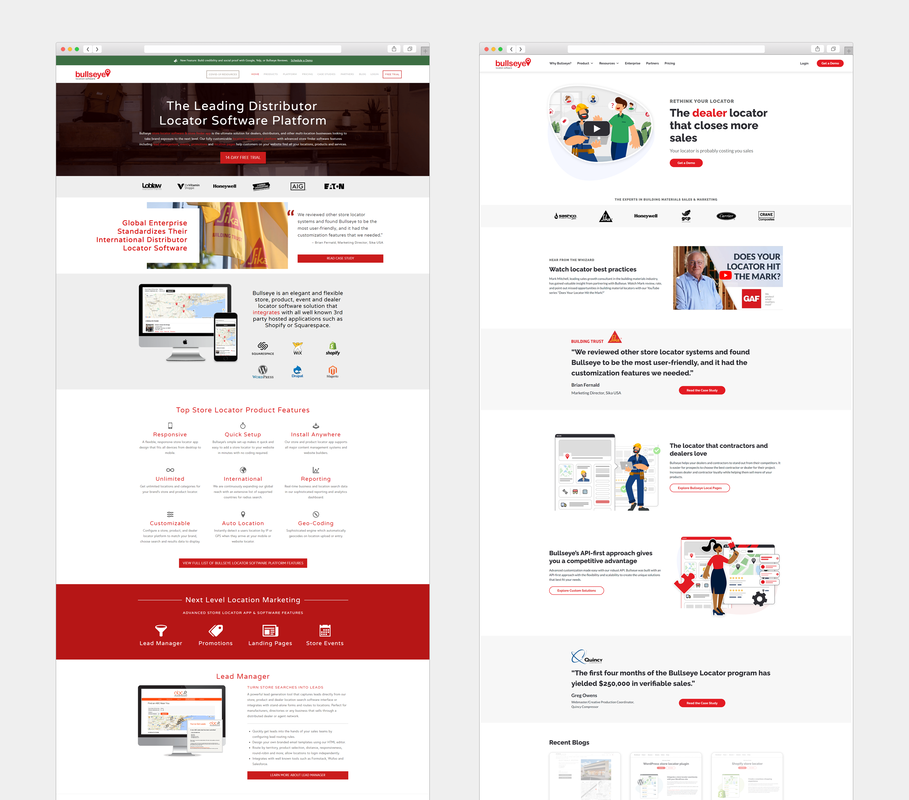
The navigation
Another major problem was confusion surrounding the Bullseye product(s). Previously, Bullseye had categorized a line of products catered for different CMS platforms. Each of these products had similar features and a range of pricing plans. Sets of advanced features are also broken into separate add-on products: Lead Manager, Events & Promotions, and Partner Promoter.
With the new website launch also came a restructuring of the Bullseye product offering. Now, Bullseye is offered as a single product with different pricing tiers. Since the product consists of a wide range of features speaking to different benefits, I implemented a mega menu. The product menu opens to display bundled groups of related features in an easy-to-digest display. A row of industries is also shown — you'll see more about these below. Of course, I designed mobile and tablet responsive states as well.
With the new website launch also came a restructuring of the Bullseye product offering. Now, Bullseye is offered as a single product with different pricing tiers. Since the product consists of a wide range of features speaking to different benefits, I implemented a mega menu. The product menu opens to display bundled groups of related features in an easy-to-digest display. A row of industries is also shown — you'll see more about these below. Of course, I designed mobile and tablet responsive states as well.
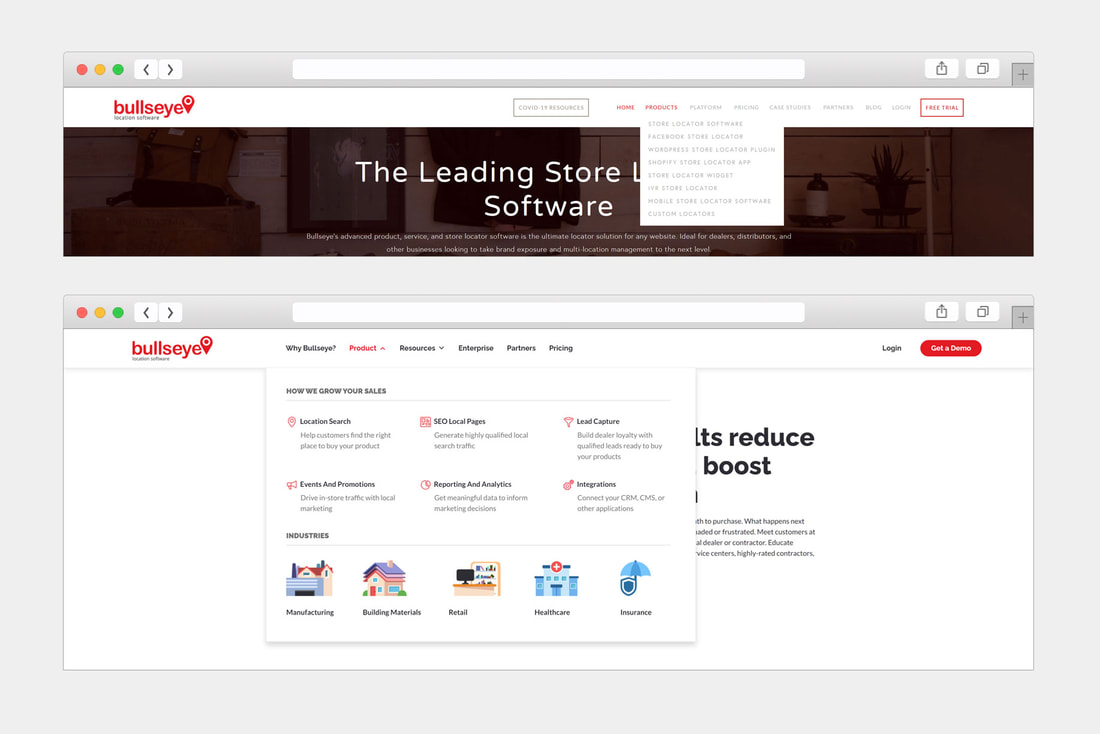
The pricing page
As I mentioned above, Bullseye was previously broken into separate products for each CMS platform. This went hand-in-hand with a confusing pricing page. Each product had different pricing tiers that were essentially the same, but they all had different names. In addition, the "Website Edition" product worked across all CMS platforms.
In the new design, I created a simple pricing chart to show four tiers of the single product. A line of copy under each tier addresses the target audience for that plan and helps users self-identify which plan is right for them. Instead of a confusing list of different free trials, my new design only offers a single trial option for the lowest-priced plan. The advanced plans can be overwhelming, so I set up a CTA to connect users with sales. Once sales understands the specific use cases, they can set up users with a tailored trial.
For a more granular breakdown, I link to a pricing plan feature comparison chart.
This opens up real estate on the pricing page to include testimonials and FAQs. These additions help build credibility with the user.
In the new design, I created a simple pricing chart to show four tiers of the single product. A line of copy under each tier addresses the target audience for that plan and helps users self-identify which plan is right for them. Instead of a confusing list of different free trials, my new design only offers a single trial option for the lowest-priced plan. The advanced plans can be overwhelming, so I set up a CTA to connect users with sales. Once sales understands the specific use cases, they can set up users with a tailored trial.
For a more granular breakdown, I link to a pricing plan feature comparison chart.
This opens up real estate on the pricing page to include testimonials and FAQs. These additions help build credibility with the user.
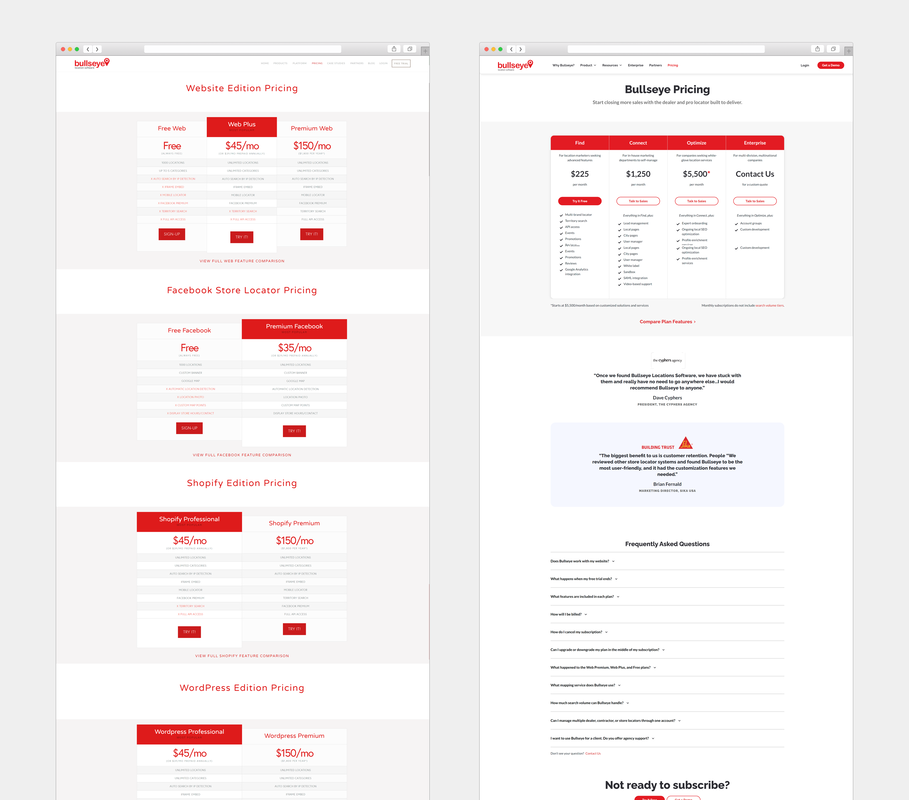
Feature pages
The Bullseye product is broken down into 6 high-level feature pages. Each page opens up with a benefit statement, then breaks down into specific features.
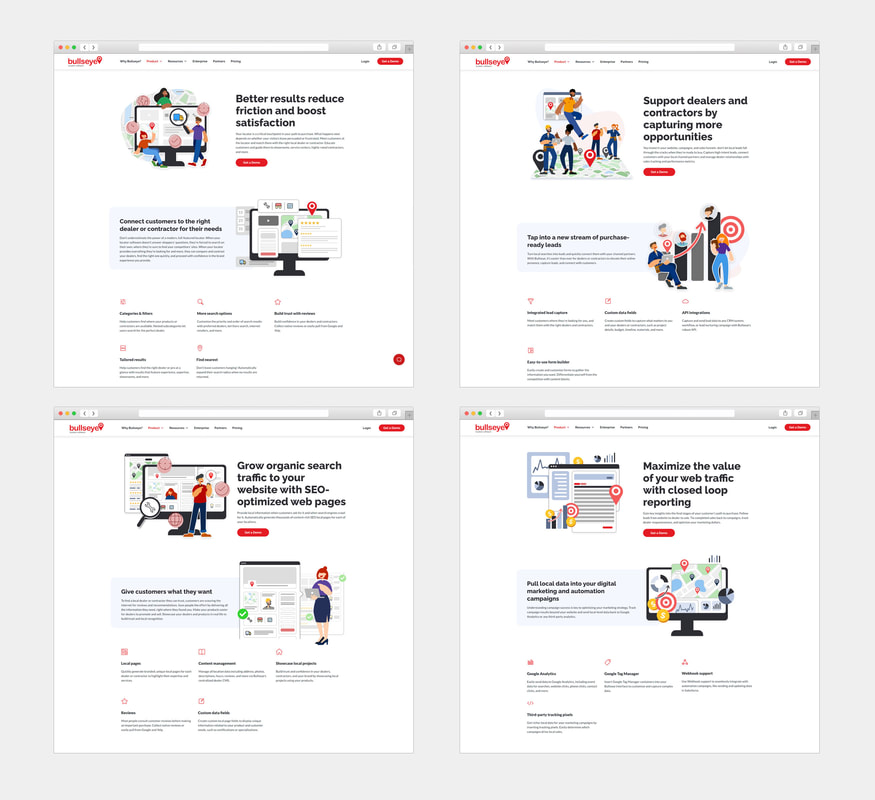
Industry pages
Bullseye has a wide range of clients. I picked out a handful of common industries with specific use cases. By calling out these industries and addressing their pain points and concerns, I'm positioning Bullseye as the best solution for their industry needs.
For example, healthcare companies are interested in provider locators for patients to find the nearest physician, clinic, or pharmacy. They're interested in proactively answering patient questions, bringing patients to waiting rooms, and purchasing a secure software solution to manage confidential patient information.
For example, healthcare companies are interested in provider locators for patients to find the nearest physician, clinic, or pharmacy. They're interested in proactively answering patient questions, bringing patients to waiting rooms, and purchasing a secure software solution to manage confidential patient information.
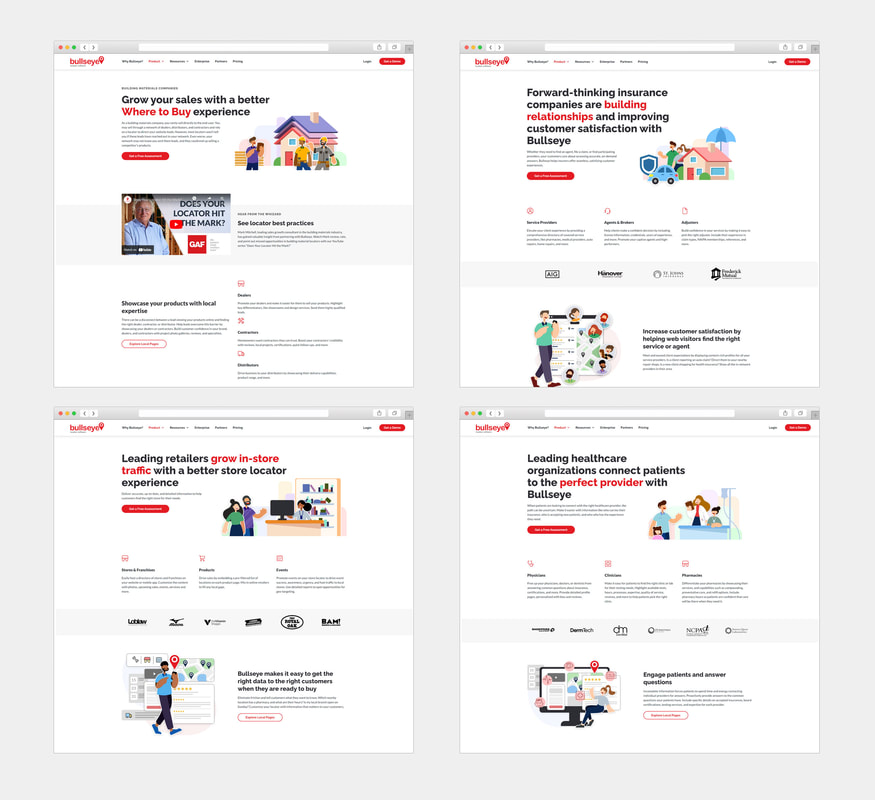
The process
Need I say more? :)
